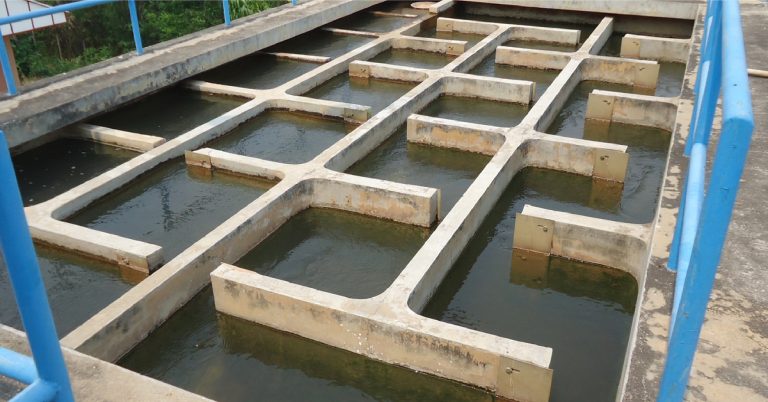Water treatment plays a crucial role in ensuring access to clean and safe drinking water, especially in countries like Nepal where water scarcity and contamination pose significant challenges. One of the key processes in water treatment is flocculation, which helps remove suspended particles and contaminants from water. In Nepal, where water quality issues are prevalent due to factors such as inadequate infrastructure and natural impurities, understanding what is flocculation becomes essential in improving water treatment systems.
In this blog, we will explore flocculation in water treatment, its role in the water treatment process, and the difference between coagulation and flocculation.
What Is Flocculation in Water Treatment?
Flocculation in water treatment refers to the process of forming large, visible particles known as floc. These flocs are aggregates of suspended particles that come together and settle out of the water. Flocculation follows the coagulation process, where coagulants like aluminum sulfate or ferric chloride are added to the water to destabilize smaller particles, allowing them to clump together.
Once the particles are destabilized, they are encouraged to form larger clusters, or flocs, which are easier to remove. The primary goal of flocculation in water treatment is to aid the separation of these aggregated particles from the water through sedimentation or filtration.
What Is the Difference Between Coagulation and Flocculation?
Understanding the difference between coagulation and flocculation is essential to grasp how they contribute to water treatment.
- Coagulation is the process of adding coagulants like aluminum sulfate or ferric chloride to the water. Coagulants neutralize the electrical charges of suspended particles, destabilizing them so they clump together.
- Flocculation: Following coagulation, flocculation occurs. Flocculation involves gentle mixing or agitation to encourage the clumped particles to grow into larger flocs, which settle out of the water more easily.
In simpler terms, coagulation breaks down small particles, while flocculation helps those particles join together into larger clumps, making them easier to remove.
The Role of Flocculation in Water Treatment
In water treatment systems, flocculation plays a critical role in achieving cleaner water by removing suspended particles such as dirt, algae, bacteria, and other impurities. The process contributes to the overall efficiency of water treatment by helping to improve the quality of the water being treated in various ways:
- Removal of Suspended Particles: Flocculation allows the small particles destabilized during coagulation to combine into larger aggregates (flocs). These larger particles are easier to settle or filter, improving water clarity.
- Improved Sedimentation and Filtration: Once formed, the larger flocs settle to the bottom of sedimentation tanks or are removed using filtration systems. This enhances the efficiency of sedimentation and reduces the load on filters, leading to better-quality treated water.
- Reduction of Pathogens and Contaminants: Flocculated particles often include harmful bacteria, viruses, and organic matter. By removing these particles, flocculation in water treatment contributes to reducing the presence of pathogens and contaminants, ensuring safer drinking water.
Ion Exchange: Pioneering Cost-Effective and Sustainable Innovations in Nepal
Ion Exchange is Nepal’s leading water and environment management company. It is recognized for its strong global presence and commitment to providing innovative solutions. We deliver customized, one-stop solutions across diverse industries, effectively addressing complex flocculation water treatment needs.
INDFLOC Solid-Liquid Separation Solutions
- INDFLOC Flocculants include synthetic anionic and cationic polymers designed for the primary treatment of sewage and industrial effluents, as well as sludge conditioning and clarification. These flocculants, along with sugar clarification processes, are highly effective in treating effluents from mining, ceramic, and mineral processing industries. It offers emulsions that enable faster flocculation with lower dosages, enhancing efficiency in wastewater and process water applications.
- INDFLOC Natural Flocculants are natural, biodegradable, and sustainable solutions tailored for various applications, such as treating municipal and industrial wastewater, clarifying sugarcane juice, and effluent treatment in textiles and tanneries. These eco-friendly flocculants offer a sustainable approach to water treatment, ensuring minimal environmental impact while maintaining high efficiency.
By leveraging cutting-edge technology and innovative techniques, Ion Exchange ensures that its flocculation water treatment solutions meet the highest industry standards, providing significant value to its clients across multiple sectors.
Conclusion
Flocculation is a critical process in water treatment that helps remove contaminants and improve water quality. In Nepal, where access to clean water remains a challenge, understanding flocculation and implementing effective flocculation techniques can play a vital role in improving water treatment systems.
By enhancing the sedimentation and filtration processes, flocculation ensures cleaner, safer, and more reliable water, particularly in rural areas and regions facing water quality issues.


